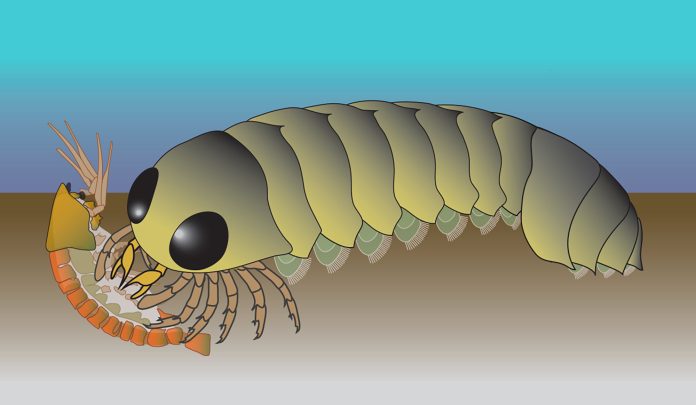
A remarkably well-preserved fossil is challenging what scientists thought they knew about the origins of spiders and their close relatives.
New research suggests that arachnids—spiders, scorpions, and similar creatures—may have first evolved in the ocean, rather than only after moving onto land as previously believed.
The study, led by Nicholas Strausfeld at the University of Arizona and published in Current Biology, takes a close look at the fossilized nervous system of an extinct animal called Mollisonia symmetrica.
This creature lived more than 500 million years ago during the Cambrian period and had long been considered a primitive marine arthropod, related to ancient horseshoe crabs.
However, when researchers examined the fossil’s nervous system in detail, they discovered features that matched modern spiders and other arachnids much more closely than expected.
Most notably, Mollisonia’s brain and nerve structures were organized in the same pattern seen in spiders, with a distinctive layout in the front segment of the body—something not found in crustaceans, insects, or even horseshoe crabs.
Strausfeld explained that the way the brain is arranged in Mollisonia appears to be flipped compared to most other arthropods.
In crustaceans and insects, the brain follows a front-to-back structure. But in spiders, and apparently in Mollisonia, that layout is reversed. This reversal might give arachnids faster reflexes and better motor control—advantages for creatures that rely on stealth, speed, and agility to hunt or spin webs.
Co-author Frank Hirth from King’s College London added that this flipped brain layout could have been a major evolutionary advantage, allowing early arachnids to develop quick, coordinated movements that are now seen in modern spiders and scorpions.
The fossil also showed signs of unsegmented brain extensions leading to claw-like appendages, similar to the fangs of today’s spiders. These neurological features strongly suggest that Mollisonia is more than just a basic marine chelicerate—it could be a close ancestor of modern arachnids.
To further support this idea, researchers ran a detailed comparison of 115 traits across various ancient and modern arthropods. Their analysis placed Mollisonia as a sister group to living arachnids, hinting that the family tree of spiders and scorpions might trace back to the sea.
The findings also suggest that early arachnids might have been among the first predators to move onto land, possibly preying on primitive insect-like creatures. This, in turn, could have driven some insects to evolve wings as a way to escape—making spiders an unexpected influence in the story of flight.
To study the fossil, Strausfeld spent time at Harvard University’s Museum of Comparative Zoology, photographing the specimen under various lighting conditions to reveal fine anatomical details. Unfortunately, similar fossils from the same time period are rarely preserved well enough to show nervous system structures, so researchers can’t yet confirm whether all Mollisonia-like animals shared these features.
Still, this study provides strong evidence that the roots of the arachnid family tree may lie beneath the ocean waves, offering a fresh perspective on how these ancient predators evolved and eventually conquered the land.



